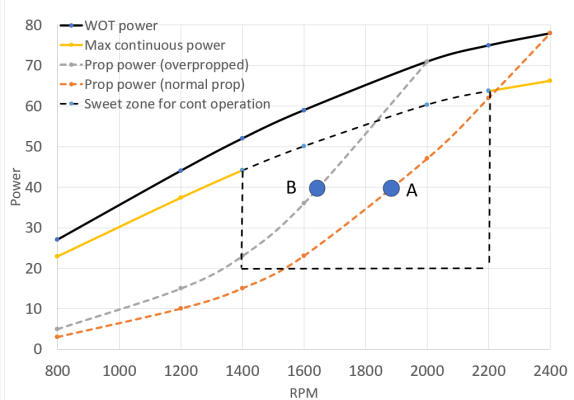DW1979OA
Veteran Member
- Joined
- Feb 20, 2013
- Messages
- 96
- Location
- USA
- Vessel Name
- Dream Weaver
- Vessel Make
- Ocean Alexander/Pilot House
I'm getting ready to do a scheduled haul out in the next six months. The props have a few dings, but nothing serious according to the divers that recently cleaned the bottom. The boat is powered by FL120's and with a clean bottom both engines reach 2250 rpms at full throttle giving 9.3 knots. 2400 rpm would be expected if things were correct. The temp also climbs past where I like to run the engines, so don't stay at rpm for long.
With 3-4 months growth on the prop and bottom, I lose about 100 rpm and drop speed by more then a knot.
The boat came to me over propped, and I've learned to run at 1750 rpms at 8 knots. Talking to a couple of brokers, they say that being over propped is not that big a deal. Getting to the time where age is catching up with me and considering selling in the next 2-3 years.
Some of my thoughts are that without a clean bottom, all boats are over propped due to additional drag. I'm in an area that a clean bottom doesn't last very long. Is getting the props tuned up worth it in that case?
jp
With 3-4 months growth on the prop and bottom, I lose about 100 rpm and drop speed by more then a knot.
The boat came to me over propped, and I've learned to run at 1750 rpms at 8 knots. Talking to a couple of brokers, they say that being over propped is not that big a deal. Getting to the time where age is catching up with me and considering selling in the next 2-3 years.
Some of my thoughts are that without a clean bottom, all boats are over propped due to additional drag. I'm in an area that a clean bottom doesn't last very long. Is getting the props tuned up worth it in that case?
jp

